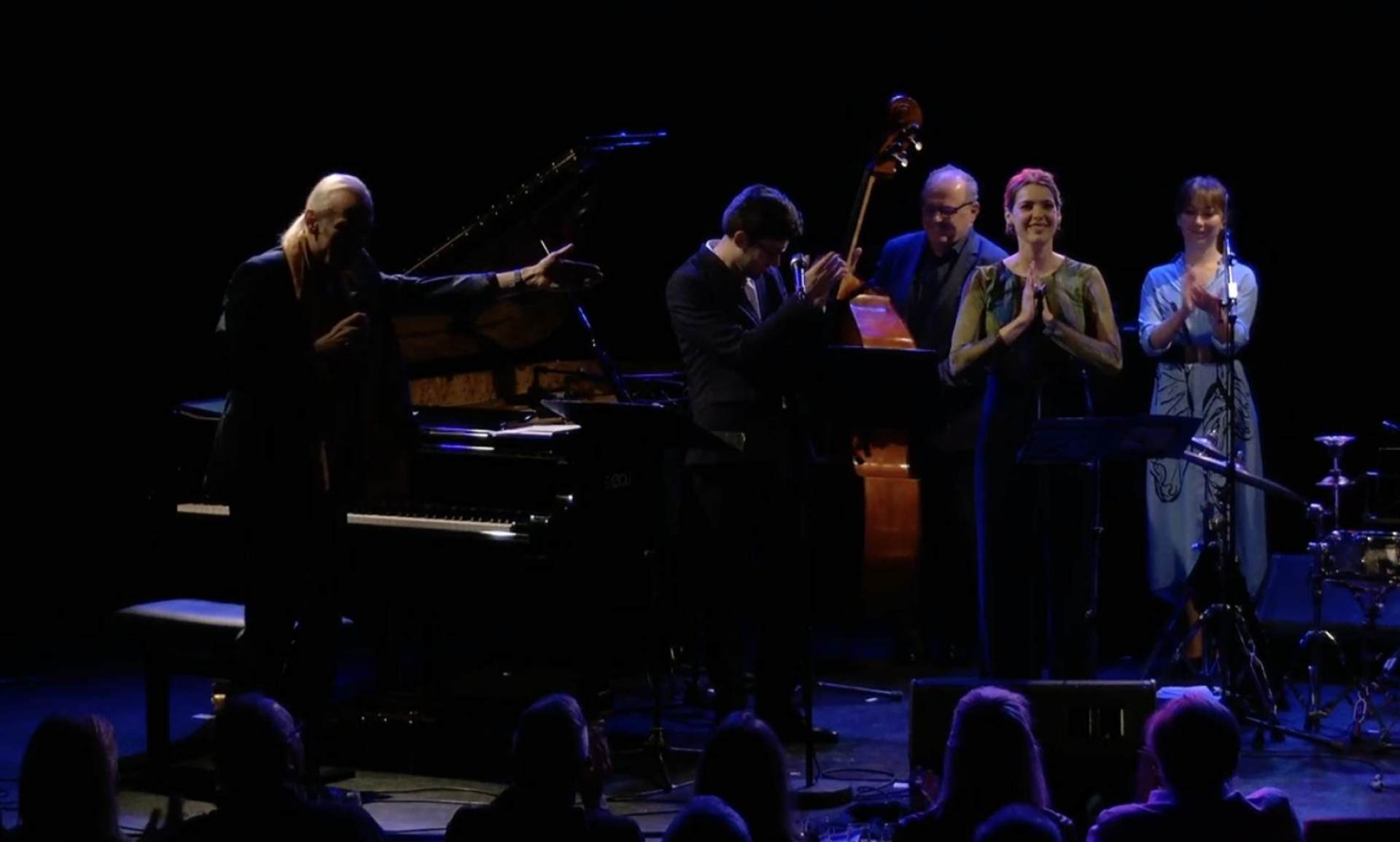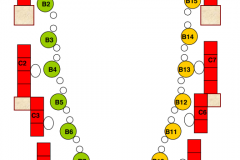Lia Pale and mathias rüegg
Mo | Tu | We | Th | Fr | Sa | Su |
After the four art song programs with Lia Pale – A Winter's Journey, The Schumann Song Book, The Brahms Song Book and Sing My Soul (The Handel Song Book) – I decided in May 2021 to create a fifth and final program in this genre of creating arrangements of art songs. Only this time the originals were to be my own. Thanks to literary scholar and cousin Peter Rusterholz, who gave me the decisive tips in the selection process, I finally concentrated on a single theme, (German-language) poems that deal with music and whose authors must have lived before 1945, for copyright reasons. This was not an easy task, as there is not even a single anthology around on this subject. The poets obviously didn't like to deal very much or very often with music, never tangible and almost always abstract and ambiguous. But thanks to the internet, I finally found what I was looking for.
In July, the final selection was made, with all of the seventeen poems stemming from the 18th, 19th and 20th centuries. I decided to write one melody each day – without piano, that is, without harmonies – in a period of no more than two hours per day. In a second round, I then worked on the harmonisation, the piano setting and the form, which included all the introductions and exits as well as the interludes. I tried to combine the romantic style with my own, while generally remaining more in the "classical" mode and avoiding jazz chords. Not wanting to curb my creativity, I had only dealt with the texts in an emotional-inspirational way and not "scientifically". Luckily so! I was amazed when I found out later that from this selection Franz Schubert had set to music Serafina an ihr Klavier, Franz Liszt Wer einsam steht im bunten Lebenskreise, and Alban Berg Die Nachtigall. And Mein blaues Klavier had inspired over sixty composers.
The "original" piano parts are played by thirteen-year-old Soley Blümel (born 2008), and the young baritone Benjamin Harasko (born 1995) is her counterpart. We worked on the pieces over a long period of time, and I kept making small corrections. But by June 2022 everything was in the can. At the same time, in December 2021, I had begun to work on eleven of the eighteen pieces for our tried and tested "band" with percussionist Ingrid Oberkanins and bassist Hans Strasser, and Lia Pale of course - with whom I've been working together for 10 years now. And the two youngsters Soley Blümel and Benjamin Harasko are making their debut here.
My five favourite soloists, the Slovaks Juraj Bartos (tp), Roman Janoska (v), Stano Palúch (v), the Dutchman Joris Roelofs (cl) and "our" Mario Rom (tp) can already be heard on earlier albums. The English translations of the lyrics are by the American translator and singer Karin Kaminker, who lives in Geneva and has been "on board "for thirty years. Just like the good souls in the background, Julian Schoenfeld and Harald Tautscher. And who Bulhelm Wisch might be, will have hardly eluded you..:-). Vienna, July 21, 2022 mathias rüegg
Program and cast
Sabina Hasanova: piano
Benjamin Harasko: baritone
Lia Pale: voice, flute, percussion
Stano Palúch: violin
Hans Strasser: bass
Ingrid Oberkanins: percussion
Mathias Rüegg: piano, compositions & arrangements
PORGY and BESS Jazzclub
Porgy & Bess (actually, Jazz and Music Club Porgy & Bess ) is a jazz club in the Riemergasse 11 in the 1st district of Vienna. The club , founded in 1993 is considered " the most important jazz organizer and trendy meeting point " of the Austrian capital .
The program of Porgy & Bess speaks to a very large audience , about 70,000 guests a year ; is accordingly Jazz " understood very pluralistic ," and the program " even in fringe areas , such as electronic music , contemporary music and world music penetrated . " Many international artists , particularly from the U.S. space , see also Austrian musician here an opportunity to perform . The club also offers the stage for events, such as the award of the Austrian World Music Award.
Musicologist Christian Scheib According to the Porgy & Bess " at the same time essential for the development of the musical ( jazz ) reality of a City" and needs and uses ' plain commonplace as urban space music. " It creates itself " through artistic preferences, acoustic quality , capacity and real capacity, the necessary exclusion of other clubs. " Here, the different areas of the jazz clubs allow - the area in front of the stage with tables, upstairs gallery , a lateral area with a bar at counter - different intense concentration on the concert scene . For Jazzthetik Porgy & Bess is even a " traditional club . "

 EN
EN DE
DE IT
IT FR
FR ES
ES RU
RU JP
JP RO
RO
 Seating plan
Seating plan 